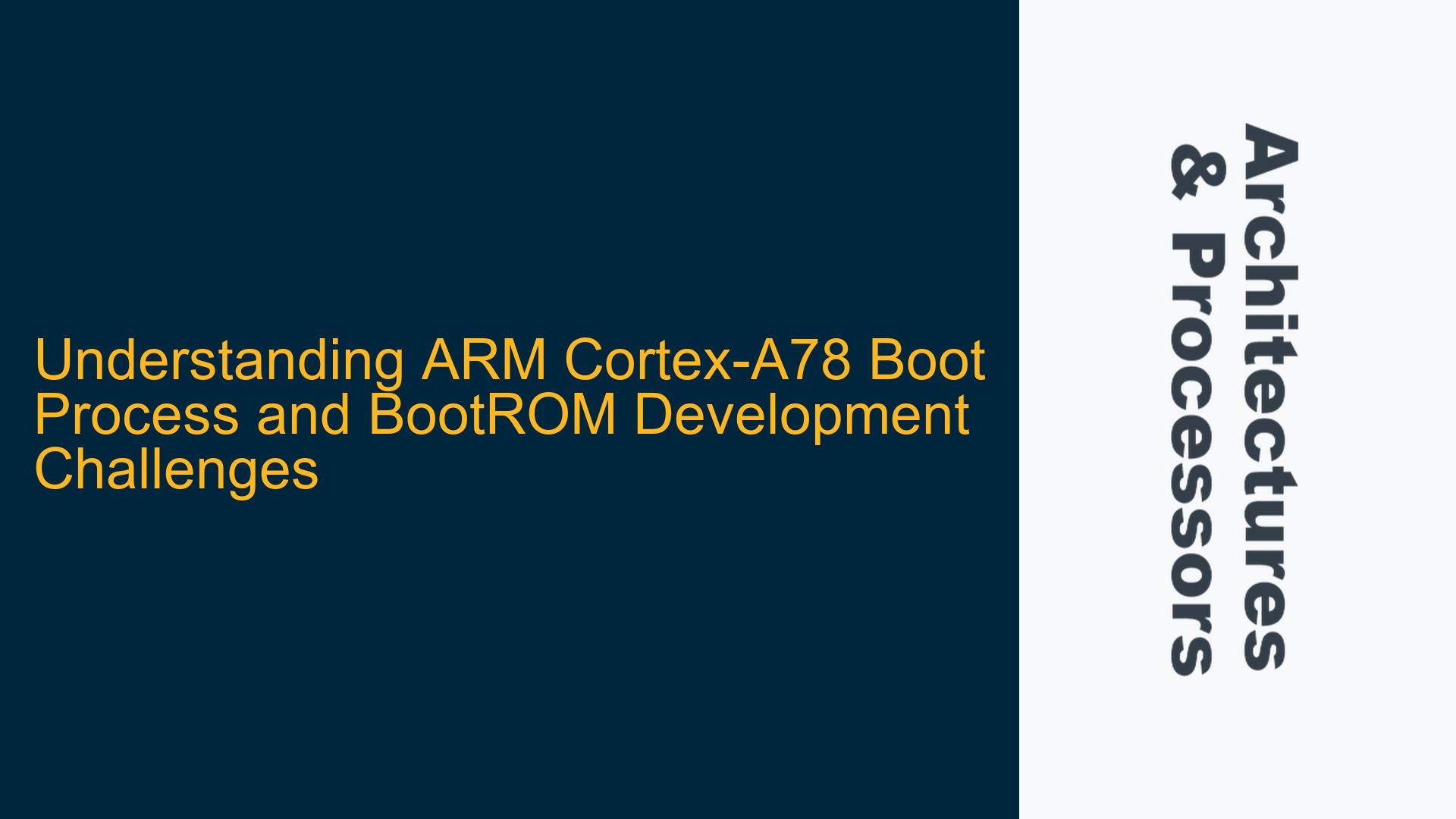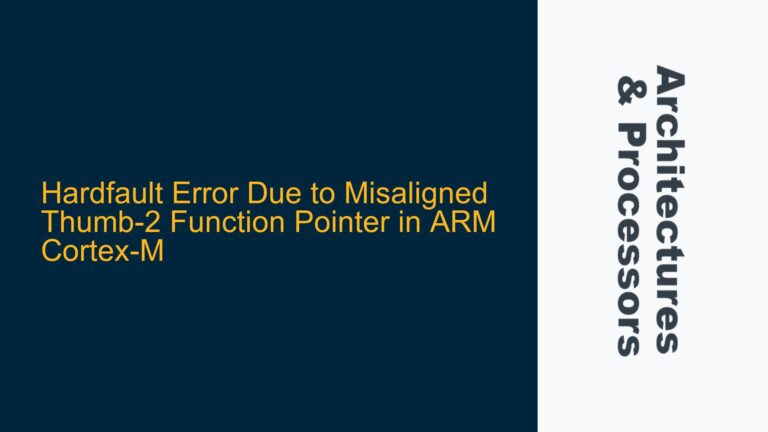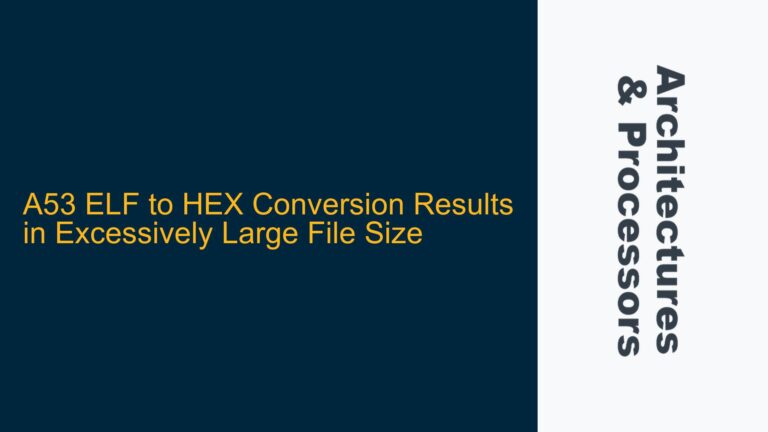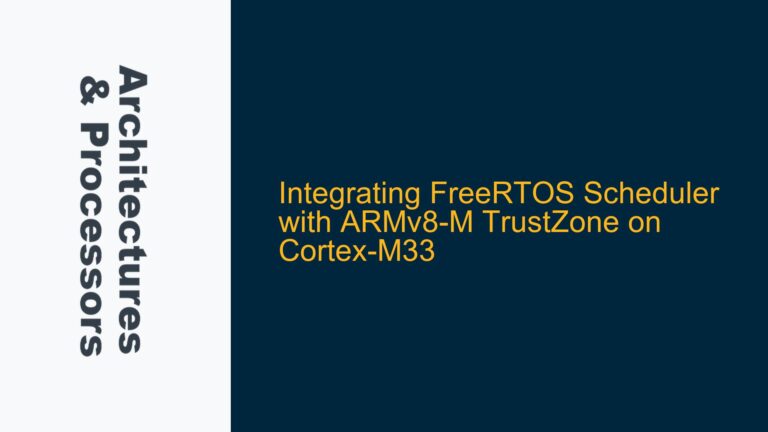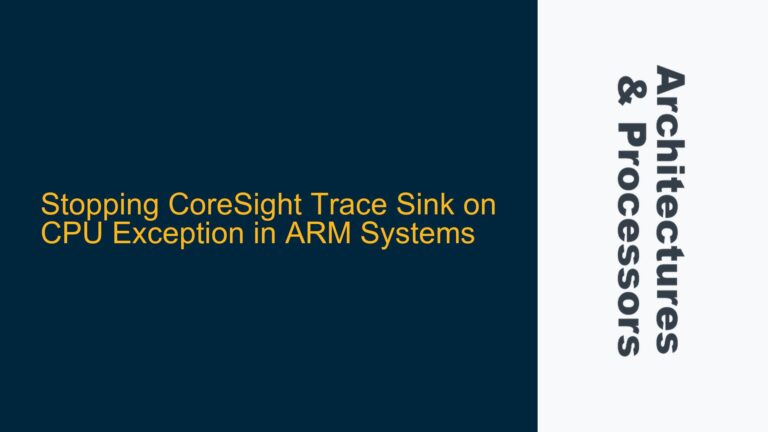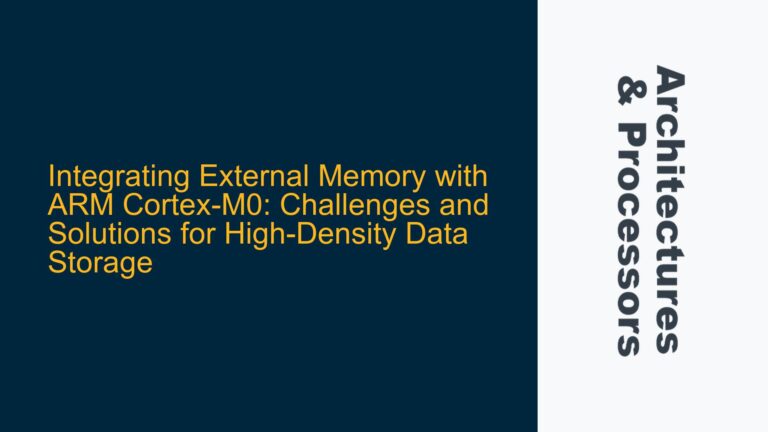ARM Cortex-A78 Boot Process and BootROM Requirements
The ARM Cortex-A78 is a high-performance processor core designed for advanced applications, including mobile devices, automotive systems, and embedded platforms. Booting the Cortex-A78 involves a sequence of steps that ensure the system initializes correctly and transitions to a higher-level operating system like Linux. The boot process typically follows this sequence: ARM Cortex-A78 Core Reset => BootROM => 1st Stage BootLoader => 2nd Stage BootLoader => Kernel Image. However, the specifics of this process can vary depending on the system configuration, such as the presence of an SoC (System on Chip) or custom hardware.
The BootROM is a critical component in this sequence. It is the first code executed by the processor after a reset and is responsible for initializing the minimal hardware required to load the next stage of the boot process. The BootROM is typically stored in a non-volatile memory (e.g., ROM or flash) and is specific to the hardware platform. For the Cortex-A78, the BootROM must handle the following tasks:
- Initializing the CPU and Memory: The BootROM sets up the CPU registers, caches, and memory controllers. This includes configuring the MMU (Memory Management Unit) and enabling the necessary memory regions.
- Setting Up Exception Vectors: The BootROM configures the exception vectors, which define the addresses where the CPU jumps in response to specific events like interrupts or exceptions.
- Loading the First Stage BootLoader: The BootROM loads the first stage bootloader from a predefined location in memory or storage (e.g., flash, eMMC, or DDR RAM).
- Handling Security Features: The BootROM may also initialize secure boot mechanisms, such as verifying the integrity of the bootloader using cryptographic signatures.
For developers working with the Cortex-A78, understanding the BootROM’s role and implementation is crucial. However, the BootROM is typically provided by the SoC vendor or the hardware manufacturer. In cases where custom hardware is used, developers may need to develop their own BootROM or modify an existing one.
Challenges in Developing or Sourcing BootROM for ARM Cortex-A78
Developing a BootROM for the ARM Cortex-A78 presents several challenges, particularly when working with custom hardware or simulation environments. These challenges include:
- Lack of Predefined BootROM: Unlike commercial SoCs, custom hardware or simulation environments may not come with a preconfigured BootROM. Developers must either develop their own BootROM or adapt an existing one to their specific hardware.
- Hardware Initialization Complexity: The BootROM must initialize the CPU, memory, and other critical hardware components. This requires a deep understanding of the Cortex-A78 architecture, including its register set, memory map, and exception handling mechanisms.
- Boot Process Customization: The boot process may need to be customized based on the hardware configuration. For example, the BootROM may need to load the first stage bootloader from DDR RAM instead of flash memory.
- Security Considerations: Implementing secure boot features in the BootROM requires expertise in cryptographic algorithms and secure hardware design. This is particularly important for systems that require protection against firmware tampering or unauthorized access.
In the absence of a predefined BootROM, developers can refer to resources like the ARM Trusted Firmware (ATF), which provides a reference implementation for firmware on ARMv8-A processors. The ATF includes support for the Cortex-A78 and can serve as a starting point for developing a custom BootROM.
Implementing and Debugging BootROM for ARM Cortex-A78
To implement and debug a BootROM for the ARM Cortex-A78, developers should follow a structured approach that includes the following steps:
-
Understanding the Cortex-A78 Boot Sequence: Before writing any code, developers must thoroughly understand the Cortex-A78 boot sequence. This includes knowing the reset vector address, exception vector table layout, and memory map. For ARMv8-A processors, the reset vector address depends on the exception level (EL) and the execution state (AArch32 or AArch64). For example, in AArch64, the CPU fetches the first instruction from the address specified by the Reset Address Register (RVBAR).
-
Setting Up the Development Environment: Developers should set up a development environment that includes a cross-compiler, debugger, and simulation or hardware platform. Tools like ARM DS-5 Development Studio or GCC with ARM support can be used for compiling and debugging the BootROM.
-
Writing the BootROM Code: The BootROM code should be written in assembly or C, depending on the complexity of the initialization process. The code should perform the following tasks:
- Initialize the CPU registers and caches.
- Configure the memory controller and set up the DDR RAM.
- Set up the exception vector table.
- Load the first stage bootloader from the appropriate storage medium.
-
Testing and Debugging: The BootROM should be tested in a simulation environment or on the actual hardware. Debugging tools like JTAG or ARM DSTREAM can be used to step through the BootROM code and verify that the hardware is initialized correctly.
-
Integrating with ARM Trusted Firmware: For systems that require secure boot or advanced firmware features, developers can integrate the BootROM with the ARM Trusted Firmware. The ATF provides a modular framework for firmware development and includes support for the Cortex-A78.
-
Optimizing for Performance and Size: The BootROM should be optimized for both performance and size, as it typically runs from a limited memory region. Techniques like code compression, linker script optimization, and assembly-level tuning can be used to reduce the BootROM footprint.
-
Handling Edge Cases: Developers should account for edge cases, such as booting from different storage media (e.g., flash, eMMC, or SD card) or handling hardware failures during initialization. This may involve adding fallback mechanisms or error handling routines to the BootROM.
By following these steps, developers can successfully implement and debug a BootROM for the ARM Cortex-A78, ensuring a reliable and efficient boot process for their custom hardware or simulation environment.
Detailed Example: BootROM Implementation for Cortex-A78
To illustrate the BootROM implementation process, consider a scenario where the Cortex-A78 is connected to DDR RAM and no other peripherals. The BootROM must initialize the DDR RAM and load the first stage bootloader from a predefined location in memory.
Step 1: Define the Reset Vector and Exception Vector Table
The reset vector is the first address the CPU jumps to after a reset. For ARMv8-A processors in AArch64 mode, the reset vector is typically located at 0x00000000 or 0xFFFF0000 (if high vectors are enabled). The exception vector table contains the addresses of the exception handlers for events like interrupts, exceptions, and system calls.
.section .vectors, "ax"
.global _start
_start:
b reset_handler // Reset vector
b undefined_handler // Undefined instruction
b svc_handler // Supervisor call
b prefetch_handler // Prefetch abort
b data_handler // Data abort
b . // Reserved
b irq_handler // IRQ
b fiq_handler // FIQ
Step 2: Initialize the CPU and Memory
The BootROM must initialize the CPU registers, caches, and memory controller. This involves setting up the MMU, enabling the caches, and configuring the DDR RAM.
void init_cpu() {
// Disable interrupts
__asm__ volatile ("msr daifset, #0xf");
// Initialize the MMU
init_mmu();
// Enable caches
__asm__ volatile ("mrs x0, sctlr_el3");
__asm__ volatile ("orr x0, x0, #(1 << 2)"); // Enable data cache
__asm__ volatile ("orr x0, x0, #(1 << 12)"); // Enable instruction cache
__asm__ volatile ("msr sctlr_el3, x0");
// Initialize DDR RAM
init_ddr();
}
Step 3: Load the First Stage BootLoader
After initializing the hardware, the BootROM loads the first stage bootloader from a predefined location in memory. This can be done by copying the bootloader code from flash or another storage medium to DDR RAM.
void load_bootloader() {
uint32_t *src = (uint32_t *)BOOTLOADER_FLASH_ADDR;
uint32_t *dst = (uint32_t *)BOOTLOADER_RAM_ADDR;
uint32_t size = BOOTLOADER_SIZE;
for (uint32_t i = 0; i < size; i++) {
dst[i] = src[i];
}
}
Step 4: Jump to the BootLoader
Finally, the BootROM jumps to the entry point of the first stage bootloader, passing control to the next stage of the boot process.
void jump_to_bootloader() {
void (*bootloader_entry)(void) = (void (*)(void))BOOTLOADER_RAM_ADDR;
bootloader_entry();
}
Step 5: Testing and Debugging
The BootROM should be tested in a simulation environment or on the actual hardware. Debugging tools can be used to verify that the CPU registers, caches, and memory are initialized correctly. Any issues should be addressed by reviewing the BootROM code and hardware configuration.
By following this structured approach, developers can successfully implement a BootROM for the ARM Cortex-A78, ensuring a reliable and efficient boot process for their custom hardware or simulation environment.
